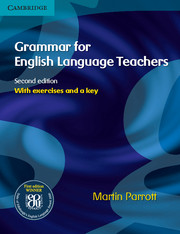29 - Defining and non-defining phrases and clauses
Published online by Cambridge University Press: 09 February 2023
Summary
Key considerations
The basic distinction between defining and non-defining is a simple one, and we shouldn’t exaggerate either its importance or its difficulty. Learners sometimes feel that there are far more problems associated with this distinction than is necessarily the case.
One reason for this is that teachers sometimes introduce the distinction between defining and non-defining clauses when learners are already grappling with the form and uses of relative clauses. It may be more helpful in the first instance to introduce the defining/non-defining distinction with examples that are simpler than relative clauses.
What are defining and non-defining phrases and clauses?
What do they do?
Defining phrases and clauses
Clauses and phrases sometimes single out a particular thing or person from two or more similar things or people, showing which one or ones we are talking about.
It’s the last house on the right.
This is the hotel we stayed in.
The phrase and clause printed in bold are ‘defining’ (they are sometimes also known as ‘identifying’ or ‘restrictive’).
Non-defining phrases and clauses
Non-defining clauses and phrases are not just clauses and phrases that ‘don’t define’. More specifically, they are clauses and phrases which don’t define in that particular context even though the same words in the same place, if spoken or punctuated differently, might do so.
What do they look like?
The following can have either a defining or non-defining function: phrases in apposition, preposition phrases, participle clauses, infinitive clauses and relative clauses. We look at each of these in turn below.
Phrases in apposition
‘Phrases in apposition’ are phrases we use to restate something we have said immediately before.
Often the two things are equivalent, or one of them is included in the other.
They gave me a bottle of elderfl ower cordial, my favourite drin.
Someone told me to try paracetamol, a pain relieve.
Often the second phrase simply provides additional information about the first – as in both these examples. These phrases are non-defining.
We usually separate non-defining phrases like this from the phrase before.
- Type
- Chapter
- Information
- Grammar for English Language Teachers , pp. 433 - 441Publisher: Cambridge University PressPrint publication year: 2010



